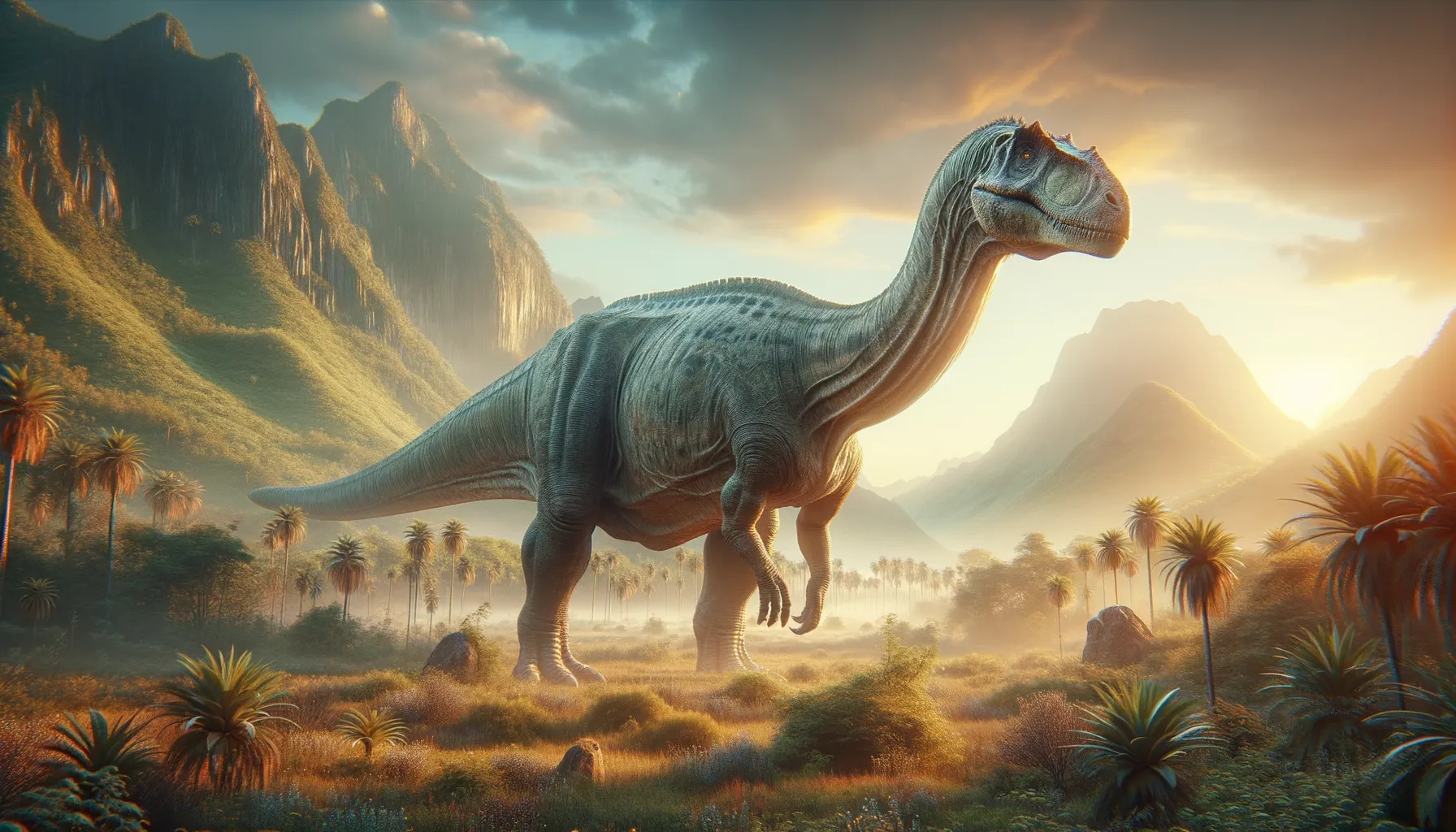
Dongyangosaurus
Ancient giant of the Cretaceous era.
Period
Cretaceous
Length
Reached lengths of approximately 15 to 20 meters.
Height
Estimated height of about 5 meters.
Weight
Weighed around 15,000 to 20,000 kilograms.
Dongyangosaurus was a gigantic sauropod dinosaur that roamed parts of Asia during the late Cretaceous period. It is known for its enormous size, with long neck and tail, typical of the sauropod lineage. Its fossil remains have provided significant insights into the diverse group of titanosaurian sauropods. The discovery of Dongyangosaurus has helped paleontologists better understand the distribution and evolution of large dinosaurs in ancient ecosystems.
Diet
Dongyangosaurus was herbivorous, feeding primarily on high-growing vegetation. Its long neck allowed it to reach leaves and branches other herbivores couldn't access.
Hunting
As a plant-eater, Dongyangosaurus did not hunt. Instead, it spent its days foraging for food in the forests and open areas.
Environmental challenges
Dongyangosaurus faced environmental challenges such as climate changes and shifting ecosystems that affected food availability. Periods of drought or flooding could have disrupted their feeding patterns. Additionally, they had to navigate large predators, although their size offered some protection.
Speed
Dongyangosaurus likely moved slowly due to its large size.
Lifespan
Estimated lifespan of 70-100 years.
First discovery
First discovered in Dongyang, China in 2008.
Fun Facts
- Dongyangosaurus was a massive dinosaur that lived during the Late Cretaceous period.
- Its name comes from Dongyang, the city in China where its fossils were first discovered.
- Dongyangosaurus was a sauropod, which means it had a long neck and tail, similar to other giant plant-eating dinosaurs.
- This dinosaur would have eaten a huge amount of vegetation daily to sustain its large body.
- Dongyangosaurus likely traveled in herds, providing protection from predators.
- Its fossils were found in areas that were once rich in rivers and lush forests.
- Dongyangosaurus is known for being one of the larger sauropods found in Asia.
Growth and Development
Dongyangosaurus underwent significant growth from hatchling to adult, which could have taken decades. Their growth required substantial resources, especially when it came to sustenance. As they grew, they developed more pronounced physical features that helped them adapt to their environment.
Habitat
Dongyangosaurus inhabited regions that were once lush and filled with abundant vegetation. Its environment likely included forests and plains where food was plentiful. Their habitats were suitable for sustaining large bonds of sauropods.
Interaction with other species
Dongyangosaurus likely coexisted with various other dinosaurs, both herbivorous and carnivorous. Its immense size would have discouraged predators, allowing it to feed without much fear of attack. They possibly lived in herds, which provided additional safety.
Natural lifespan
Dongyangosaurus may have lived up to a century in the right conditions.
Reproduction
Reproduction likely involved laying eggs in nests where the young were left to hatch and fend for themselves initially. Such nesting sites would have been chosen carefully to ensure the safety of the offspring.
Social behaviour
Dongyangosaurus might have exhibited social behaviors such as moving in herds for protection. Interactions within the group could have included cooperative feeding and protection strategies against predators. Social structures would have been key to survival.
Fossil locations
The primary fossils of Dongyangosaurus have been found in Dongyang, Zhejiang Province, China, lending the dinosaur its name. These remains have helped expand knowledge of sauropod diversity in Asia during the Cretaceous period.
